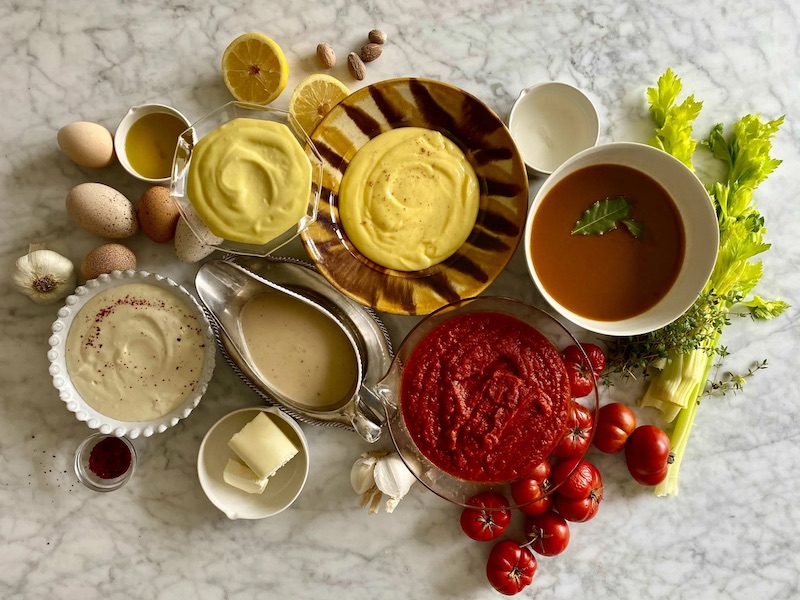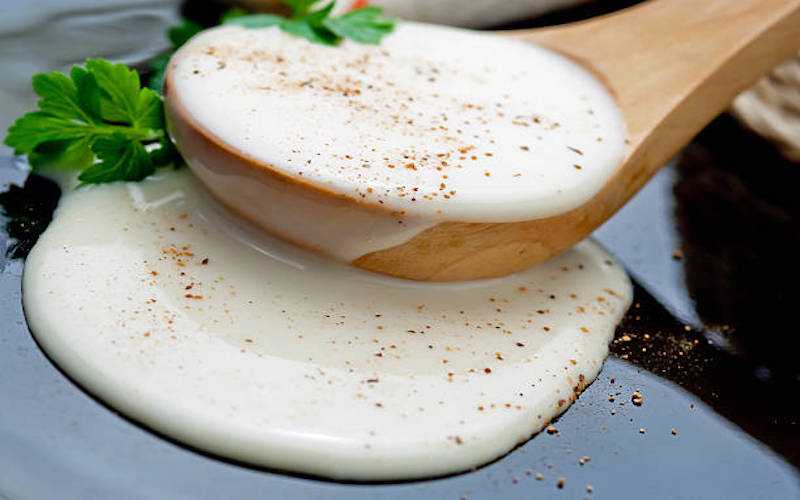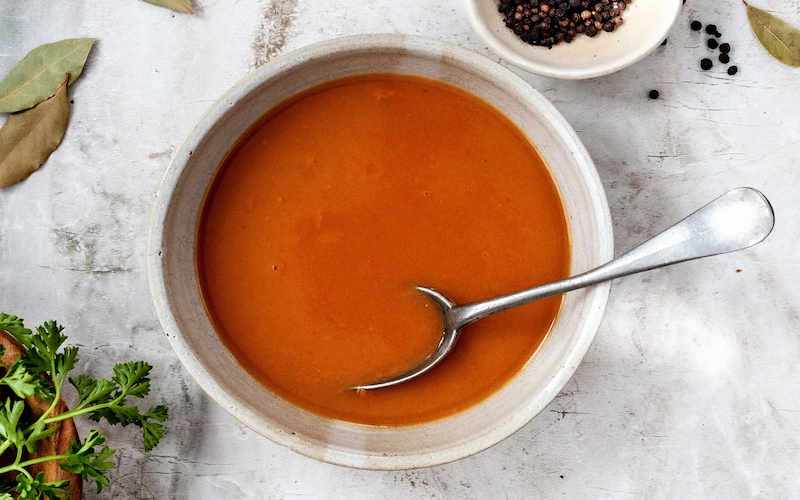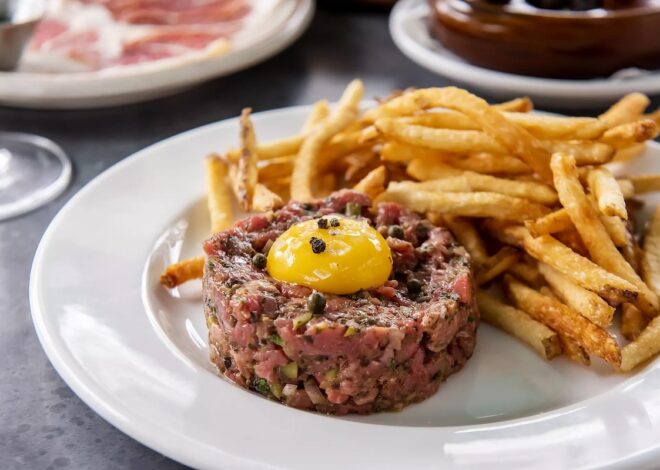
5 sauces of French Cuisine
French cuisine is famous for its rich and flavorful sauces, and the five “mother sauces” form the basis of many classic dishes. These sauces of French cuisine can be used as is or modified to create millions of variations. Join Evaworlds to learn about the 5 most delicious sauces through the article below.
Sauces of French cuisine – Béchamel
Béchamel is an indispensable part of French cuisine. This is a typical creamy white sauce made from butter, flour, and milk. With its smooth, creamy texture and rich flavor, Béchamel is a versatile ingredient in many different dishes.

Béchamel is widely used in cooking, often used to coat gratin dishes, making the dish more flavorful. With its smooth creaminess and buttery aroma, Béchamel brings richness and richness to every palate.
In addition, Béchamel is easy to adjust its taste and consistency, making it an indispensable part for any chef who wants to create delicious and attractive French dishes.
Sauces of French cuisine Velouté
Velouté is a lighter savory sauce in French cuisine, made from a white broth such as chicken, beef or fish broth, thickened with a roux, a mixture of butter and flour. With its smooth texture and rich taste, veloute is often used to boil fish and poultry, creating delicious and diverse dishes.
With the ability to adjust the sweetness and richness of broth and roux, velouté can be seasoned with herbs, lemon or other spices depending on personal preference and the type of dish being prepared. Velouté dishes often bring the satisfaction and warmth of French cuisine, making them the ideal choice for any meal.
Espagnole
Espagnole is a rich brown sauce in French cuisine. This sauce is made from brown broth, usually from beef or veal, along with vegetables and tomato sauce. With its characteristic and deep flavor, espagnole is often used to stew meat, prepare stews and is the main ingredient of sauces such as demi-glace.

Prepared from nutritious brown broth, espagnole brings a rich and rich flavor to dishes. In particular, the perfect combination of vegetables and tomato sauce creates a multi-dimensional layer of flavor, adding richness and depth to each piece of meat and each drop of sauce.
With its versatility and diversity of uses, espagnole is an important ingredient in French cuisine and forms the basis of many delicious and attractive dishes.
Sauces of French cuisine Hollandaise
Hollandaise is a luxurious and smooth butter sauce, made from egg yolks, melted butter and lemon juice. With its unique flavor and smooth, creamy texture, hollandaise is often served with boiled eggs, asparagus and seafood, creating classy and delicious dishes.
To make hollandaise, egg yolks are combined with melted butter and a little lemon juice. Then, the mixture is beaten well and gently heated to form a smooth and shiny cream mixture.
With the gentle aroma of butter and fresh lemon scent, hollandaise is a valuable ingredient in French cuisine. It is used to create interesting and unique dishes.
Ketchup
Tomato sauce is a simple but incredibly versatile sauce, made from tomatoes, onions, and herbs. With its fresh flavor and vibrant color, tomato sauce is the go-to ingredient for countless dishes, from traditional pasta sauces to pizza and stews.

To make tomato sauce, tomatoes will be cooked with onions and herbs such as basil, oregano and basil to create a delicious and rich mixture. If you want, you can absolutely add other ingredients like garlic, chili, carrots to increase flavor, and nutrition.
With great versatility, tomato sauce can be used in a variety of dishes, from spaghetti and pasta to grilled meats and sandwiches. The freshness and sweetness of tomatoes combined with the aroma of herbs create a balanced and appealing flavor, making tomato sauce an important ingredient in the culinary kitchen.
Conclusion
These 5 sauces of French cuisine are the starting point for the countless delicious and complex sauces in French cuisine. By understanding their basic principles and flavors, you can open up a world of culinary possibilities. Follow Evaworlds to update the latest information.













